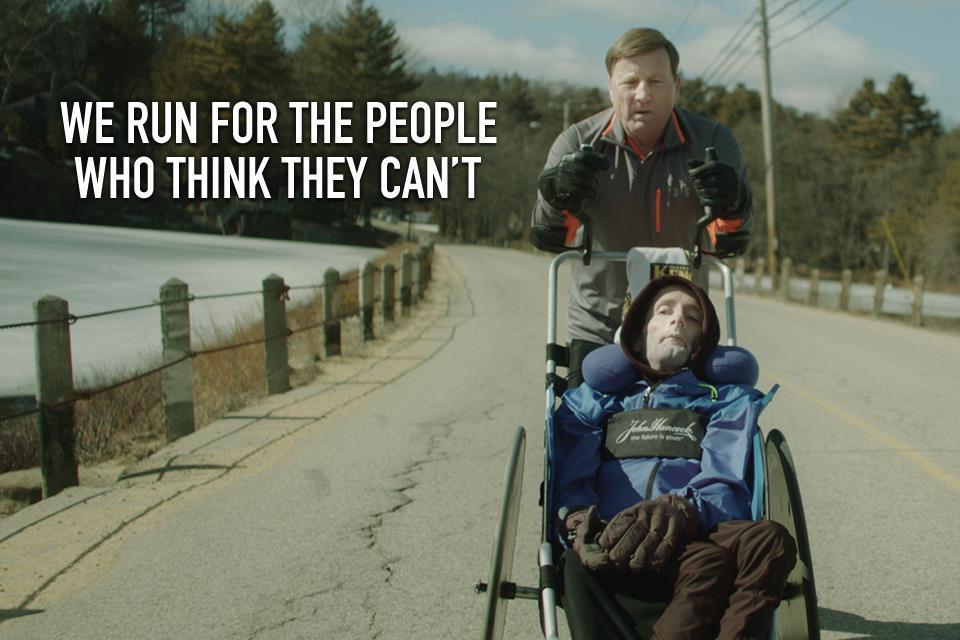
by Brian Shilhavy
Editor, Health Impact News
Rick Hoyt, who became a national symbol of hope and inspiration to millions, died a few weeks ago due to complications with his respiratory system, as he had cerebral palsy, which left him a quadriplegic when he was born.
His father, Dick Hoyt, and co-teammate of Team Hoyt who competed in the Boston Marathon for years, as well as other competitions such as the Ironman Triathlon, died in 2021.
If you have never heard the story of Dick Hoyt and his son Rick Hoyt before, then read on and be blessed. It is a tremendous story about not listening to all the negative things this world tries to tell us, especially in the medical field, and how faith can overcome many obstacles the world puts in your way.
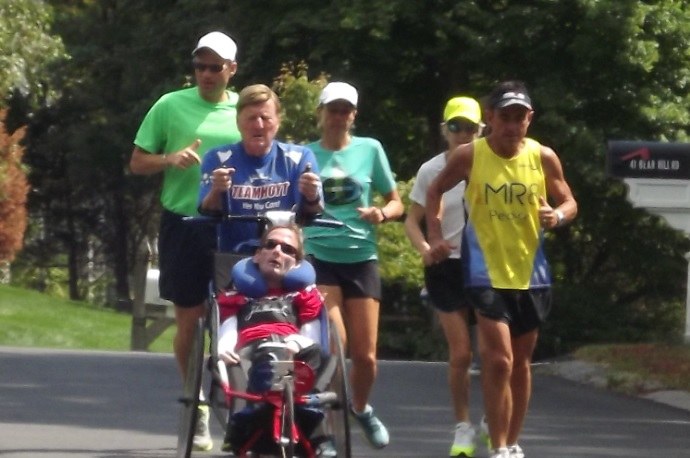
Rick was born in 1962 to Dick and Judy Hoyt in Holland, Massachusetts in the USA.
As a result of oxygen deprivation to Rick’s brain at the time of his birth, Rick was diagnosed as a spastic quadriplegic with cerebral palsy.
As a result, his brain could not send the correct messages to his muscles. Dick and Judy were advised to institutionalize Rick because there was no chance of him recovering, and little hope for Rick to live a “normal” life.
His parents held onto the fact that Rick’s eyes would follow them around the room, giving them hope that he would somehow be able to communicate someday.
The Hoyts took Rick every week to Children’s Hospital in Boston, where they met a doctor who encouraged the Hoyts to treat Rick like any other child. Rick’s mother Judy spent hours each day teaching Rick the alphabet with sandpaper letters and posting signs on every object in the house.
In a short amount of time, Rick learned the alphabet. This was just the beginning of Dick and Judy’s quest for Rick’s inclusion in community, sports, education and one day, the workplace.
With $5,000 in 1972 and a skilled group of engineers at Tufts University, an interactive computer was built for Rick. This computer consisted of a cursor being used to highlight every letter of the alphabet.
Once the letter Rick wanted was highlighted, he was able to select it by just a simple tap with his head against a head piece attached to his wheelchair.
When the computer was originally first brought home, Rick surprised everyone with his first words. Instead of saying, “Hi, Mom,” or “Hi, Dad,” Rick’s first “spoken” words were: “Go, Bruins!” The Boston Bruins were in the Stanley Cup finals that season.
It was clear from that moment on that Rick loved sports and followed the game just like anyone else.
In 1975, at the age of 13, Rick was finally admitted into public school. After high school, Rick attended Boston University and, in 1993, he graduated with a degree in Special Education.
Dick retired in 1995 as a Lt. Colonel from the Air National Guard, after serving his country for 37 years.
Team Hoyt
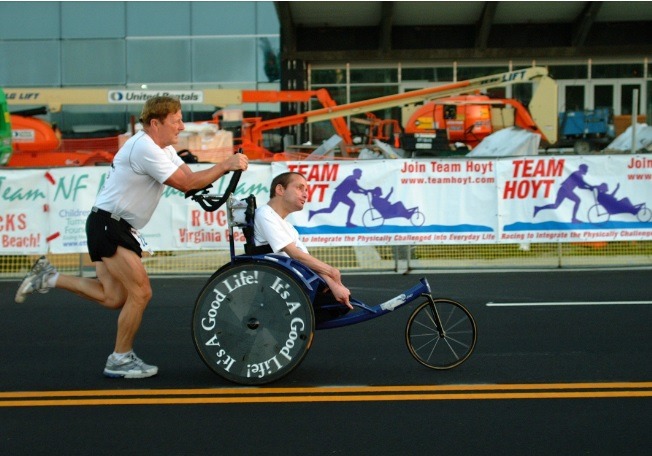
In the spring of 1977, Team Hoyt began when Rick asked his father if they could run a five-mile road race together in their town of Westfield, Massachusetts, to benefit a lacrosse player at his school who had become paralyzed.
He wanted to prove that life went on no matter your disability.
At the time Rick asked to run that race, Dick was a 40-year-old nonrunner. When he and Rick got to the event, organizers saw the wheelchair, the disabled son, and the middle-aged dad and gave them a look that said, “You two won’t make it past the first corner.”
They didn’t know Dick.
It wasn’t in his nature to quit a job he’d started. And besides, by that first corner, Rick was having too much fun.
They ran the entire five miles, and didn’t finish last. Afterward, a wild grin lit up Rick’s face.
Later he tapped out: “Dad, when I’m running, it feels like I’m not handicapped.”
Dick had a slightly different reaction.
“After that race I felt disabled—I was pissing blood for a week,” he says. “But we knew we were onto something. Making Rick happy was the greatest feeling in the world.”
Running made Dick happy, too.
A career Army guy, he felt like he was back in basic training again, breezing through a forced march while the other guys struggled and bitched. And, like the military, running was structured.
If you followed the program, you got faster. Dick bought a pair of running shoes and researched a training schedule.
Judy, Rick’s mother, located an engineer in New Hampshire to build a wheelchair modified for running, with three bicycle wheels and a foam seat molded to Rick’s body. The Hoyts’ first running chair was produced for $35, and its basic design forms the template for all the racing chairs the men have subsequently used.
After that first race in 1977, the family’s life changed forever. The epiphany of that first race fed a desire to do other races around New England.
But just because the Hoyts wanted to run more didn’t mean they were necessarily welcomed by the running community.
At a 10K in Springfield, Massachusetts, Dick remembers getting snubbed by the other athletes.
“They shied away from us as if they thought they were going to catch a disease,” Dick recalls.
The race officials were even less hospitable.
“The officials said they didn’t fit because Dick was pushing him,” Judy remembers in the Hoyts’ biography.
“Dick did it ‘differently’ than all the other runners. The wheelchair athletes didn’t want them because Rick wasn’t powering his own chair, and the able-bodied runners said, ‘You’re just going to get in the way. Why do you want to push this kid of yours who doesn’t talk and just sits in the wheelchair?’”
Four years after their first race, Dick and Rick sought to run the 1981 Boston Marathon, but again met resistance.
They were told that they needed to meet a qualifying time, just like any other runner officially entered in the race. There would be no exceptions, even for a guy pushing his kid in a wheelchair.
“The Hoyts were proposing a nontraditional form of participation and, at the time, any change at Boston was a big deal,” says Jack Fleming, spokesman for the Boston Athletic Association, organizers of the marathon.
Fleming, who was not with the BAA at the time, adds,
“It wasn’t just Rick and Dick; the same thing had happened with women running for the first time, and then professionals.”
Team Hoyt decided to run the 1981 race unofficially, as bandits, and clocked a remarkable debut marathon time of 3:18. They ran unofficially again in 1982, going under three hours for the first time (2:59), and then shaved another minute off in 1983.
Still, no waiver came from the BAA. Finally, in October 1983, they went to Washington, D.C., to run the Marine Corps Marathon, looking to clock a 2:50, the time Boston required for runners in Rick’s 20 to 29 age group (even though Dick, who was doing all the running, was 43 and would have qualified with a 3:10).
On a cold, rainy morning, they ran 2:45:30. They officially raced the Boston Marathon the following spring and went on to complete 32 Boston Marathons together.
“They personify the race as much as the elite athletes do,” says Fleming. “Besides being inspirational role models, they are also quintessential New England guys. The crowds loved them.”
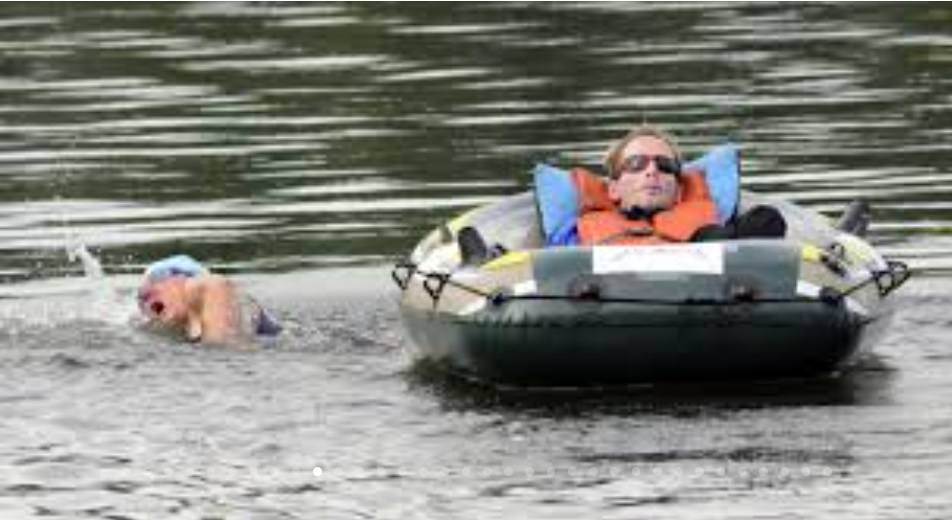
Four years after competing in their first Boston Marathon, on Father’s Day, the father and son would take on something that was, at the time, unprecedented: a triathlon that consisted of a one-mile swim, a 40-mile bicycle ride, and a 20-mile run.
For the Hoyts, the question was not if they could achieve this, but how?
The answer lied in equipment. For the swimming portion of the triathlon, Dick pulled Rick in a specialized boat with a bungee cord wrapped around Dick’s waist.
To bike, the pair used a two-seater bicycle with a custom-made seat, and for the final road race, he pushed Rick in his athletic chair.
From there, and it was now 1988, it was onto the most challenging of all sporting events, the Ironman Triathlon in Kona, Hawaii. This grueling event consists of a 2.4-mile (3.86 km) swim, a 112-mile (180.25 km) bicycle ride, and a marathon 26.2-mile (42.2 km) run.
The first try did not go well because Dick got sick, but they returned to Hawaii in 1989 and finished the race. In 2003′s Ironman attempt, their bike crashed, and they spent five hours in the hospital, Rick with stitches on his face and Dick with road rash.
But they got back up to try again, and they finished. They would make several other returns to the beautiful state of Hawaii to compete in the Ironman Triathlon.
Over the years, the Hoyts completed a number of marathons, triathlons, and road races, but in 1992 it was time to take on a new challenge unique to them – a 3770-mile trek across the United States through 18 states from Santa Monica Pier in Los Angeles to the Marriott Long Wharf on Boston Harbor, Mass.
The journey took 47 consecutive days, and it was a family affair to remember, which they affectionately named “The Trek Across America.”
Rick was amazed at his father’s strength. The average triathlete probably weighs about 150 pounds and their bike weighs about 17 pounds. This is a total of 167 pounds. Dick weighed about 180 pounds, and their bike weighs about seventy pounds, because it needs to be heavier and stronger to hold both him and his seat.
Rick weighed about 100 pounds. These totals 350 pounds, or almost 200 pounds more than the average triathlete with his bike. The same math could be used to figure out how heavy a load Dick has to pull over a two-mile swim as well.
Dick Hoyt’s Heart Problems
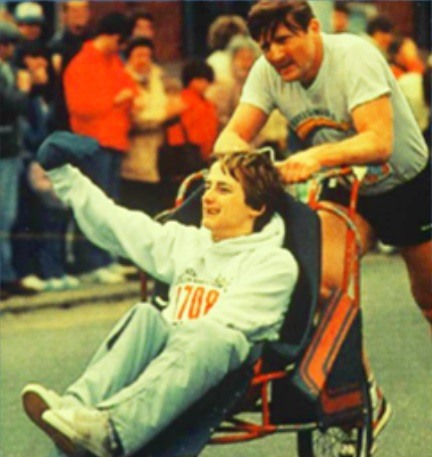
Midway through a half-marathon in the winter of 2003, as he and Rick prepared for that year’s Boston, Dick felt an unfamiliar tickling sensation in his throat, along with an unusual buildup of saliva. The sensation passed, and they finished the race without difficulty. But the phenomena recurred at races over the next few weeks. Dick consulted his doctor, who administered an EKG.
“A day later I’m driving to my gym when my cell phone rings,” Dick recalls. “It’s my doctor. She asks me, ‘Where you going?’ I tell her, ‘I’m going to work out.’ She says, ‘No you’re not. You’re coming straight to the hospital for a stress test. The EKG showed that you had a heart attack.’ She said that if I wasn’t in such good shape, I’d probably be dead by now.”
The stress test indicated he needed an angioplasty. That procedure was done just days before the Boston Marathon, and meant Team Hoyt would miss the race for the first time in 22 years.
One doctor allegedly told Dick that if he had not started training at the age he did, he probably would have died about 15 years earlier. He died at the age of 80 in 2021.
A Broken Mother
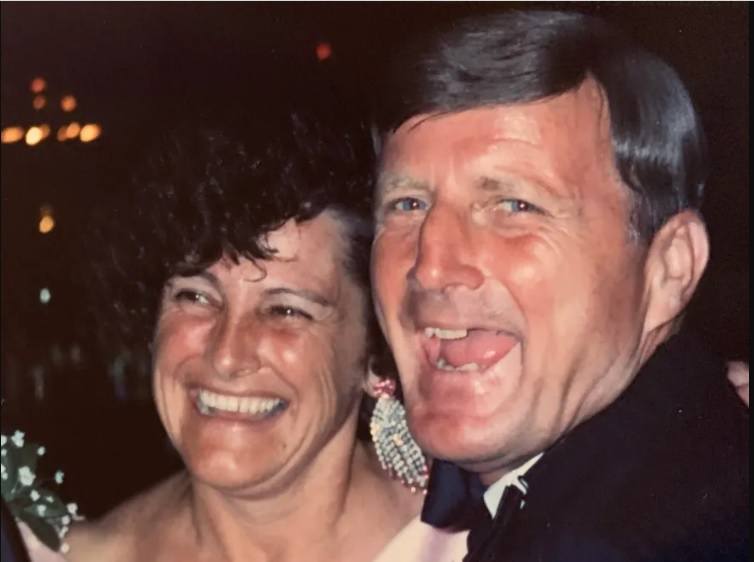
The Hoyt story, as inspirational as it is, is also not without heartbreaks as well.
After Rick was born in 1962, Judy stayed home to care for Rick, as Dick joined the Army National Guard, and later transferred to the Air National Guard, where he would spend the next 30 years, retiring as a Lieutenant Colonel.
Sons Robert and Russell were born in 1964 and 1967.
While much has been written on Dick and Rick’s legendary accomplishments, the powerhouse of the relationship was originally Judy.
“My mother was Rick’s first caretaker and our family’s support system,” said Russ Hoyt. “But her real legacy, which is less known, is the work she did for every disabled person in the United States.”
When it was time for Rick to enter Kindergarten, Judy enrolled him in North Reading elementary. The kindergarten classroom was on the first floor of the schoolhouse, and the school was able to accommodate his wheelchair.
“I think people were thinking ‘OK, it’s kindergarten, there’s not a lot of academic pressure’,” said Russ.
But the first grade classroom was up a flight of stairs, and the next year the school told Judy that Rick would need to go to a special school.
Furious, Judy met with the Superintendent.
“This isn’t right,” she protested. “My son is intelligent and can participate.”
The only option they offered the Hoyts was a school where other students had physical but also cognitive disabilities, without the ability to understand or comprehend on the same level as Rick.
Judy fought the decision but the school was intransigent.
A short time later, Dick was transferred from Natick to the Barnes Air National Guard base in Westfield, Massachusetts, and the family relocated.
Never one to rest, in 1979 Judy founded the Association for Support of Human Services (ASHS) and Kamp for Kids, the first summer camp to offer children and young adults – both with and without disabilities – an opportunity to experience growth, inclusion and fun in a summer camp setting.
Hosted at Camp Togowauk in Westfield, the nonprofit operates today as a part of BHN, and has hosted more than 6,000 children to date.
Judy proudly watched as Rick and Dick’s celebrity grew with each Boston Marathon or with their first Hawaii Ironman in 1989.
Her pride, though, faded as Dick began assuming more responsibilities for their son and, over time, supplanted Judy as Rick’s primary caregiver.
Rob, the Hoyt’s middle son, says he can understand how Judy must have hurt.
“I think my mother had a hard time with all the attention that my father got through running,” says Rob, who lives in Holyoke, Massachusetts.
“The accolades seemed to come much thicker and faster for him than they had with her. She had been everything for Rick. My mother got a nonspeaking spastic quadriplegic through high school and then through college, and now that role was taken by my father, and in a much more public manner.”
Judy’s frustration and alienation culminated in 1992, when Dick and Rick completed a 45-day, 3,753-mile, bike-and-run trek across the United States. Her men’s interest in running had morphed into a time-consuming obsession.
After 34 years of marriage, she and Dick divorced in 1994.
After so many years, Dick tried not to dwell on what happened to the couple’s marriage.
“I know that Rick’s and my involvement in running and racing was hard on Judy,” he said.
“First, because of all the attention that got put on me, and second, because, for all the time she spent around the sport, she never understood distance running—why Rick would want to spend all that time on the road, and why I would insist on going to bed at 9 o’clock on a Saturday evening so I would be fresh to race the next morning.”
In 2010 Judy died from ovarian cancer.
In hospice, surrounded by her sons, Judy Hoyt turned to her youngest, Russell, and said “please get your father”.
Dick Hoyt, by then her ex-husband of 18 years, entered the room. From her bed, Judy reached out and took Dick’s hand. “I’m sorry,” she said. “You know I always loved you.”
With tears in his eyes, Dick replied “You are the only true love of my life.”
The Hoyt family had a deep faith and dependence upon God, and their story has been visualized and shared with millions of people worldwide with a video that was produced with Christian artist Nicole Mullins singing the background vocals.
Get a box of tissues ready, and watch this inspiring tribute to this amazing family.
I can do all things through the one who strengthens me. (Philippians 4:13)
Sources
The following sources were used to compile this tribute:

See Also:
Understand the Times We are Currently Living Through
Exposing the Christian Zionism Cult
Jesus Would be Labeled as “Antisemitic” Today Because He Attacked the Jews and Warned His Followers About Their Evil Ways
Insider Exposes Freemasonry as the World’s Oldest Secret Religion and the Luciferian Plans for The New World Order

Identifying the Luciferian Globalists Implementing the New World Order – Who are the “Jews”?
Who are the Children of Abraham?
The Brain Myth: Your Intellect and Thoughts Originate in Your Heart, Not Your Brain
Fact Check: “Christianity” and the Christian Religion is NOT Found in the Bible – The Person Jesus Christ Is
Christian Myths: The Bible does NOT Teach that it is Required for Believers in Jesus to “Join a Church”
Exposing Christian Myths: The Bible does NOT Teach that Believers Should Always Obey the Government
Was the U.S. Constitution Written to Protect “We the People” or “We the Globalists”? Were the Founding Fathers Godly Men or Servants of Satan?
The Seal and Mark of God is Far More Important than the “Mark of the Beast” – Are You Prepared for What’s Coming?
The United States and The Beast: A look at Revelation in Light of Current Events Since 2020
The Satanic Roots to Modern Medicine – The Mark of the Beast?
Medicine: Idolatry in the Twenty First Century – 8-Year-Old Article More Relevant Today than the Day it was Written
Having problems receiving our emails? See:
How to Beat Internet Censorship and Create Your Own Newsfeed
We Are Now on Telegram. Video channels at Bitchute, and Odysee.
If our website is seized and shut down, find us on Telegram, as well as Bitchute and Odysee for further instructions about where to find us.
If you use the TOR Onion browser, here are the links and corresponding URLs to use in the TOR browser to find us on the Dark Web: Health Impact News, Vaccine Impact, Medical Kidnap, Created4Health, CoconutOil.com.







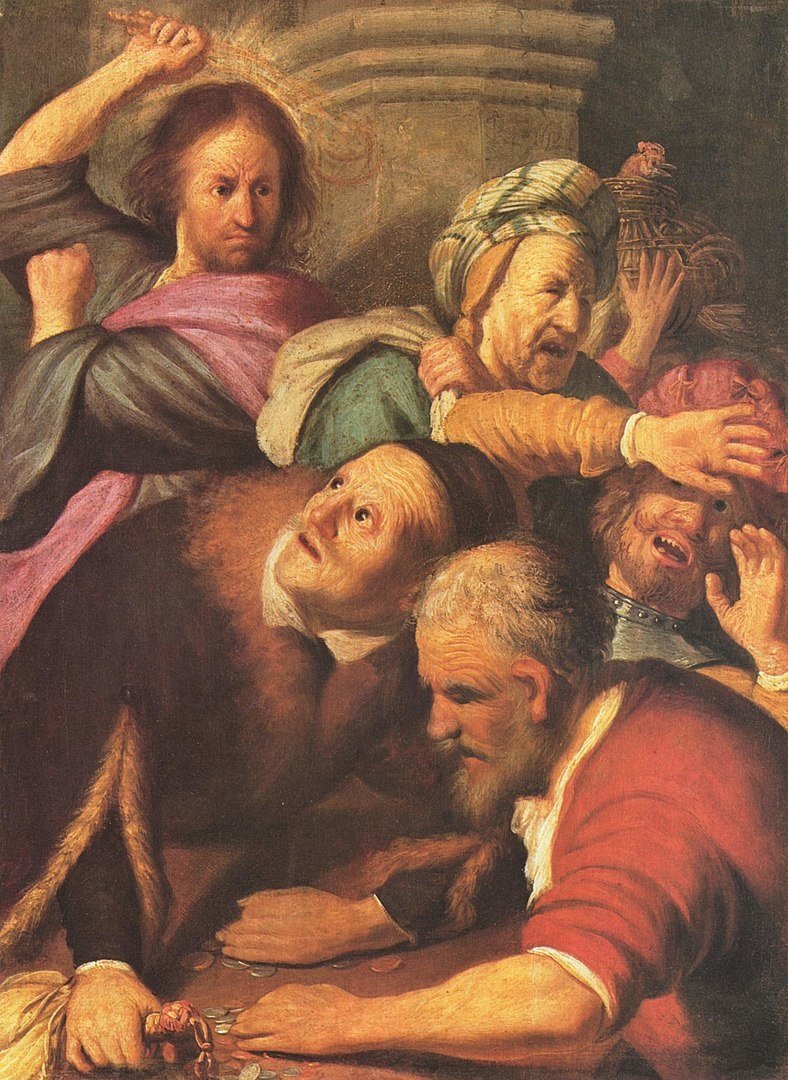


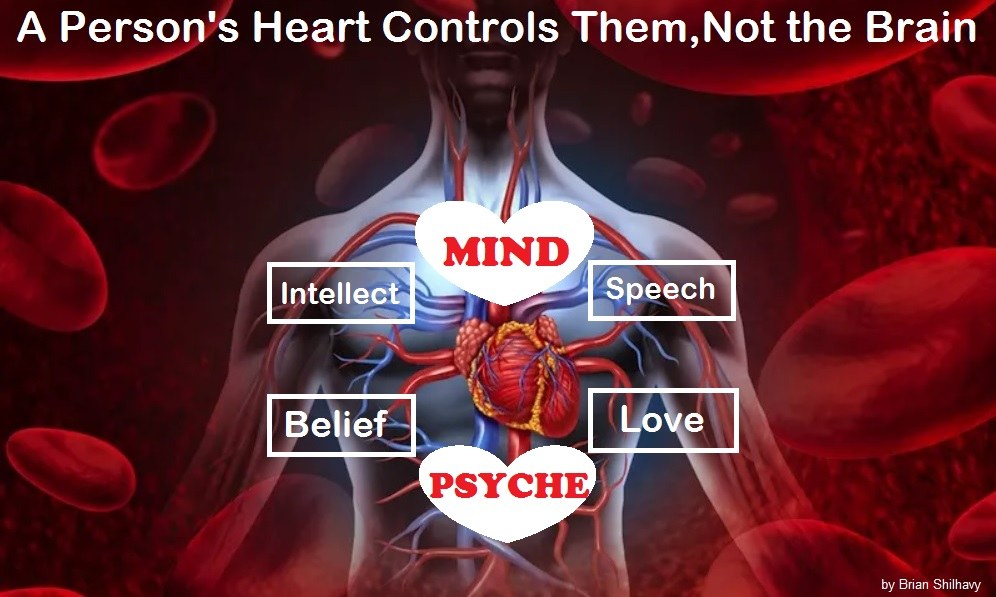


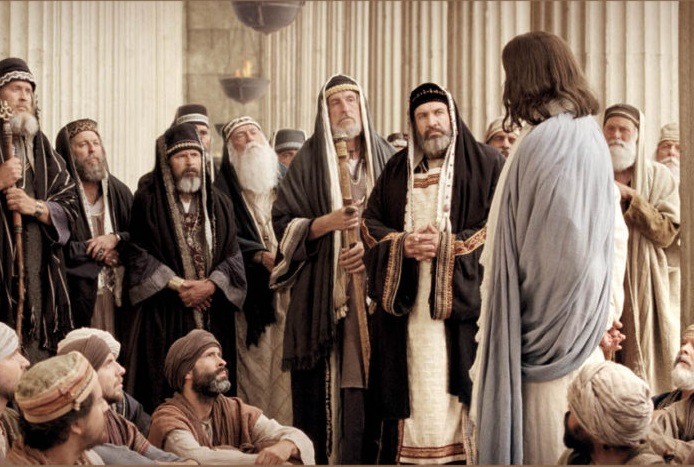
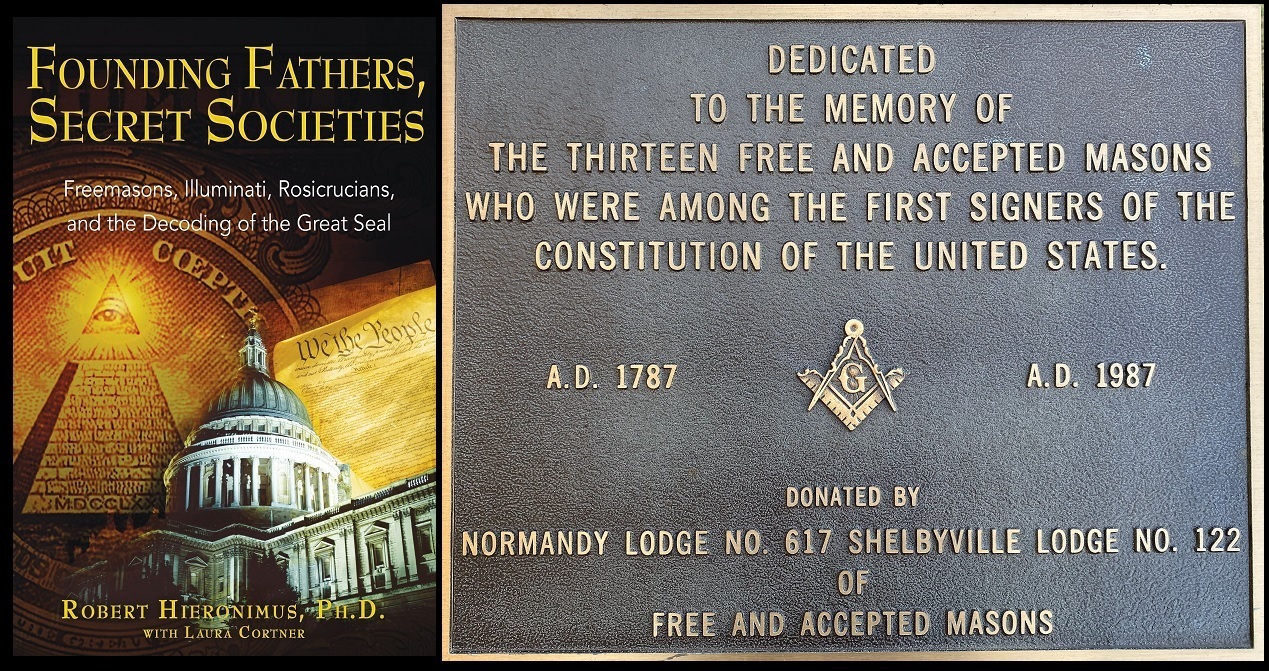



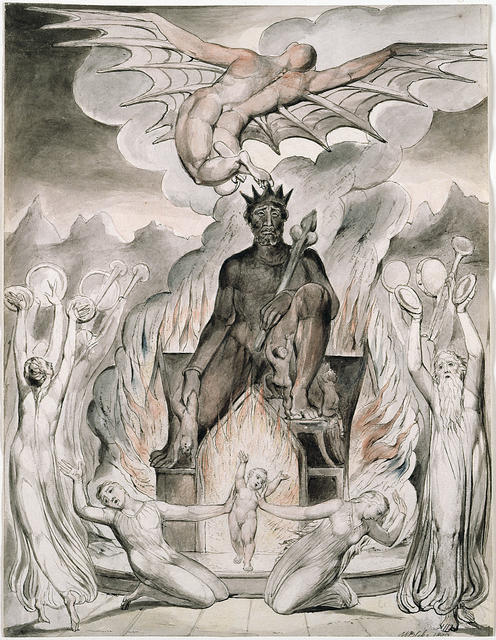


4 Comments